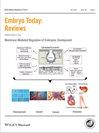下载PDF
{"title":"Evaluation of the association of zoonotic Ljungan virus with perinatal deaths and fetal malformation","authors":"Lili Zheng, Fang Wang, Jing Huang, Hong Xin","doi":"10.1002/bdrc.21093","DOIUrl":null,"url":null,"abstract":"<p>More and more epidemiologic and experimental data support the notion that Ljungan virus (LV), originally isolated from some rodent populations in Sweden, Denmark, and the United States, plays an important role in stillbirth and fetal malformation. Mouse dams infected with LV may result in uterine resorption and perinatal deaths that may cross generations, and their offspring may suffer high rates of malformations including cranial, brain, and limb malformations. In humans, researches founded that LV infection is related to malformation, intrauterine fetal death, and even central nervous system malformation. Although molecularly characterized, little is known about the biophysical nature of LV. Consequently, the role of LV infections in sudden infant death syndrome is still confusing, and the mechanism of how LV infections cause diseases is not clear. More research is clearly necessary to explore the mechanisms of LV infection in human and animal diseases to bring improvement to the clinical outcomes. Birth Defects Research (Part C) 105:81–85, 2015. © 2015 Wiley Periodicals, Inc.</p>","PeriodicalId":55352,"journal":{"name":"Birth Defects Research Part C-Embryo Today-Reviews","volume":"105 1","pages":"81-85"},"PeriodicalIF":0.0000,"publicationDate":"2015-03-19","publicationTypes":"Journal Article","fieldsOfStudy":null,"isOpenAccess":false,"openAccessPdf":"https://sci-hub-pdf.com/10.1002/bdrc.21093","citationCount":"5","resultStr":null,"platform":"Semanticscholar","paperid":null,"PeriodicalName":"Birth Defects Research Part C-Embryo Today-Reviews","FirstCategoryId":"1085","ListUrlMain":"https://onlinelibrary.wiley.com/doi/10.1002/bdrc.21093","RegionNum":0,"RegionCategory":null,"ArticlePicture":[],"TitleCN":null,"AbstractTextCN":null,"PMCID":null,"EPubDate":"","PubModel":"","JCR":"Q","JCRName":"Medicine","Score":null,"Total":0}
引用次数: 5
引用
批量引用
Abstract
More and more epidemiologic and experimental data support the notion that Ljungan virus (LV), originally isolated from some rodent populations in Sweden, Denmark, and the United States, plays an important role in stillbirth and fetal malformation. Mouse dams infected with LV may result in uterine resorption and perinatal deaths that may cross generations, and their offspring may suffer high rates of malformations including cranial, brain, and limb malformations. In humans, researches founded that LV infection is related to malformation, intrauterine fetal death, and even central nervous system malformation. Although molecularly characterized, little is known about the biophysical nature of LV. Consequently, the role of LV infections in sudden infant death syndrome is still confusing, and the mechanism of how LV infections cause diseases is not clear. More research is clearly necessary to explore the mechanisms of LV infection in human and animal diseases to bring improvement to the clinical outcomes. Birth Defects Research (Part C) 105:81–85, 2015. © 2015 Wiley Periodicals, Inc.
评估人畜共患龙岗病毒与围产期死亡和胎儿畸形的关系
越来越多的流行病学和实验数据支持这样一种观点,即最初从瑞典、丹麦和美国的一些啮齿动物种群中分离出来的Ljungan病毒(LV)在死产和胎儿畸形中起重要作用。感染LV的小鼠可能会导致子宫吸收和围产期死亡,这种情况可能会代代相传,它们的后代可能会出现高发生率的畸形,包括颅、脑和肢体畸形。在人类中,研究发现LV感染与畸形、宫内胎儿死亡甚至中枢神经系统畸形有关。虽然具有分子特征,但对LV的生物物理性质知之甚少。因此,左室感染在婴儿猝死综合征中的作用尚不清楚,左室感染致病的机制尚不清楚。显然需要更多的研究来探索人类和动物疾病中左室感染的机制,以改善临床结果。出生缺陷研究(C辑)105:81-85,2015。©2015 Wiley期刊公司
本文章由计算机程序翻译,如有差异,请以英文原文为准。

 求助内容:
求助内容: 应助结果提醒方式:
应助结果提醒方式:


